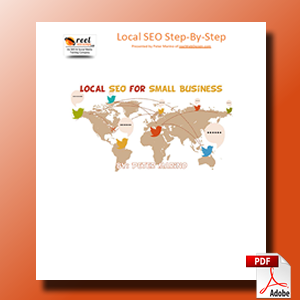
It is hard to believe that you are finally ready to get your startup business up and running. You have been planning and organizing for months, ensuring that every detail was perfect before the big launch.
Yet somehow, after just a few weeks in operation, it feels like things are not going according to plan. Could it be that you made one of these startup mistakes?
Now, it’s worth highlighting that every new startup is guaranteed to make mistakes. It’s how we handle them that matters.
Thus, you’ll find six avoidable mistakes startup owners make and advice on how to overcome them in this article.
Not Active on LinkedIn
Whether you’re serving businesses or consumers, having an online presence is crucial in this digital age. All successful small business owners have one thing in common: they’re adaptable and transform their businesses to match the times.
Some business owners may argue that there’s no reason for them to be active on LinkedIn. After all, other social media platforms may be more likely to have their target audience.
Nevertheless, many successful small business owners who won with LinkedIn would tell you that the platform should be part of your marketing strategy.
LinkedIn is where the professionals are. It helps you build connections and network with others in your industry. And with most people preferring to do their independent research before making a purchase, LinkedIn has become a reference point for trustworthiness and authority.
Other than your website, LinkedIn is often a stop for potential customers to learn about your startup. Therefore, write up a winning LinkedIn profile – both for yourself and your company – quickly so that you can see those leads coming in.
No Prioritization
It is easy to get sucked into a whirlwind of startup activities. But if you’re not careful, the priorities can get messed up, and it will take much longer to achieve your goal.
Try reorganizing your resources so that your efforts are directed towards specific channels with your target audience.
When you’re a startup owner, you’ll want to ensure that you’re not stretched thin. Instead of getting higher reach and visibility, these investments may only lead to greater costs and message dilution.
Besides LinkedIn, which other social media platforms do you think would give your business the best traction it needs?
Trying to Do Everything Yourself
If you’re starting up a business, there are high chances you’re wearing many hats to make sure you succeed. However, if you want to grow and scale your startup, it’s time for that “jack of all trades” mentality to go away.
You have the opportunity now in this startup phase to focus on what is most important: closing off your business deals. As such, it’s important to delegate tasks to your startup team.
For example, some things that you may delegate to others are:
- answering phone calls
- accounting and money management tasks
- customer service
- data entry
- content writing
- research
- web design and development
A successful small business owner knows the strengths and weaknesses of their team members well. Hence, it would help if you tried taking more initiative in getting to know your team better.
Aside from their qualifications, they might have other handy skills you’d never know about unless you start asking. They’d likely be more than happy to bring them to the table as well!
Unrealistic Goals
If you want to build a startup, be realistic and have a good plan in place before you start.
While all startup owners should be ambitious, basing your startup on outlandish ambitions is not the way to go.
Instead, go with more realistic plans that match your current capabilities and what you want to achieve. Realistic goals will help ensure success in the present to grow your startup while making it sustainable for the future.
There’s nothing wrong with having lofty goals, but if they are unrealistic, you may make one of those startup mistakes where you end up wasting time and resources to get back on track.
To ensure that you’re planning the right milestones for your business to achieve, think about where your customers are in their buyer’s journey.
The buyer’s journey has four stages: Awareness, Consideration, Decision and Loyalty.
Depending on where your customers are in their journey, you can tailor your startup strategy accordingly.
Not Having an Exit Strategy
When designing your startup plan, think about what will happen next if things don’t work out as planned.
Will you still want to continue with this vision of yours even though there may be some bumps along the way?
Or have you thought about possibly selling part of your company at certain milestones so that you could move onto new opportunities while also receiving cash from these shares that you sold?
Giving yourself an exit might sound like planning for failure, but it’s not. Instead, it’s simply a way to plan for everything and anything that might happen with your startup, big or small.
Not Having a Blog on Your Website
Websites with blogs are proven to have more leads compared to those without them. 67% more, in fact.
Reasons why having articles or other resources will help boost your business growth:
1) It gives your startup a more credible and authoritative voice
Google recognizes pages with content as being of higher quality, thus boosting search engine rankings.
2) It provides a more personal connection to your startup
Successful startup owners know that it’s crucial to engage with their startup community in an authentic and personal way. Blog writing can be a great way to humanize your startup and help build relationships with customers because you show that you’re willing to share your knowledge and expertise and not always focused on selling.
3) Other websites, blogs, or social media channels may cite your content
These editorial backlinks will bolster your brand visibility and drive even more traffic to your website.
4) You’ll be able to establish your startup’s niche or industry expertise
This will allow you to become a recognized expert in this field, leading to more opportunities and partnerships.
Conclusion
If you’re a startup owner, there are many things to consider when setting up your business. These six startup mistakes provide insight into what you should be looking out for and what you can do to rectify them.
All the best in your startup journey!


 Content marketing is the new buzzword when it comes to online marketing. SEO was sooo 2001. Social media has been and gone. It’s now all about Content Marketing. Whilst I don’t actually agree with these statements, it does throw up an out of the ordinary and problematic situation for brands that are now engaging in content marketing. The problem is that everyone is doing it! So how are you going to break through the mass of content and make your writing and your message stand out? In this article, I take a look why giving your content a voice is crucial to whether or not your content marketing efforts succeed. Hold tight, this could be a bumpy ride (for your existing strategy).
Content marketing is the new buzzword when it comes to online marketing. SEO was sooo 2001. Social media has been and gone. It’s now all about Content Marketing. Whilst I don’t actually agree with these statements, it does throw up an out of the ordinary and problematic situation for brands that are now engaging in content marketing. The problem is that everyone is doing it! So how are you going to break through the mass of content and make your writing and your message stand out? In this article, I take a look why giving your content a voice is crucial to whether or not your content marketing efforts succeed. Hold tight, this could be a bumpy ride (for your existing strategy).